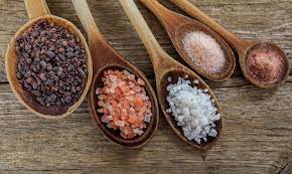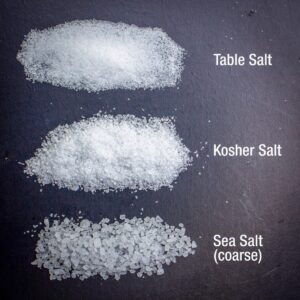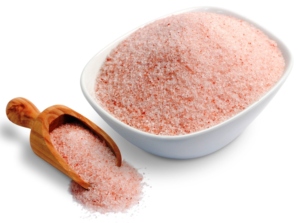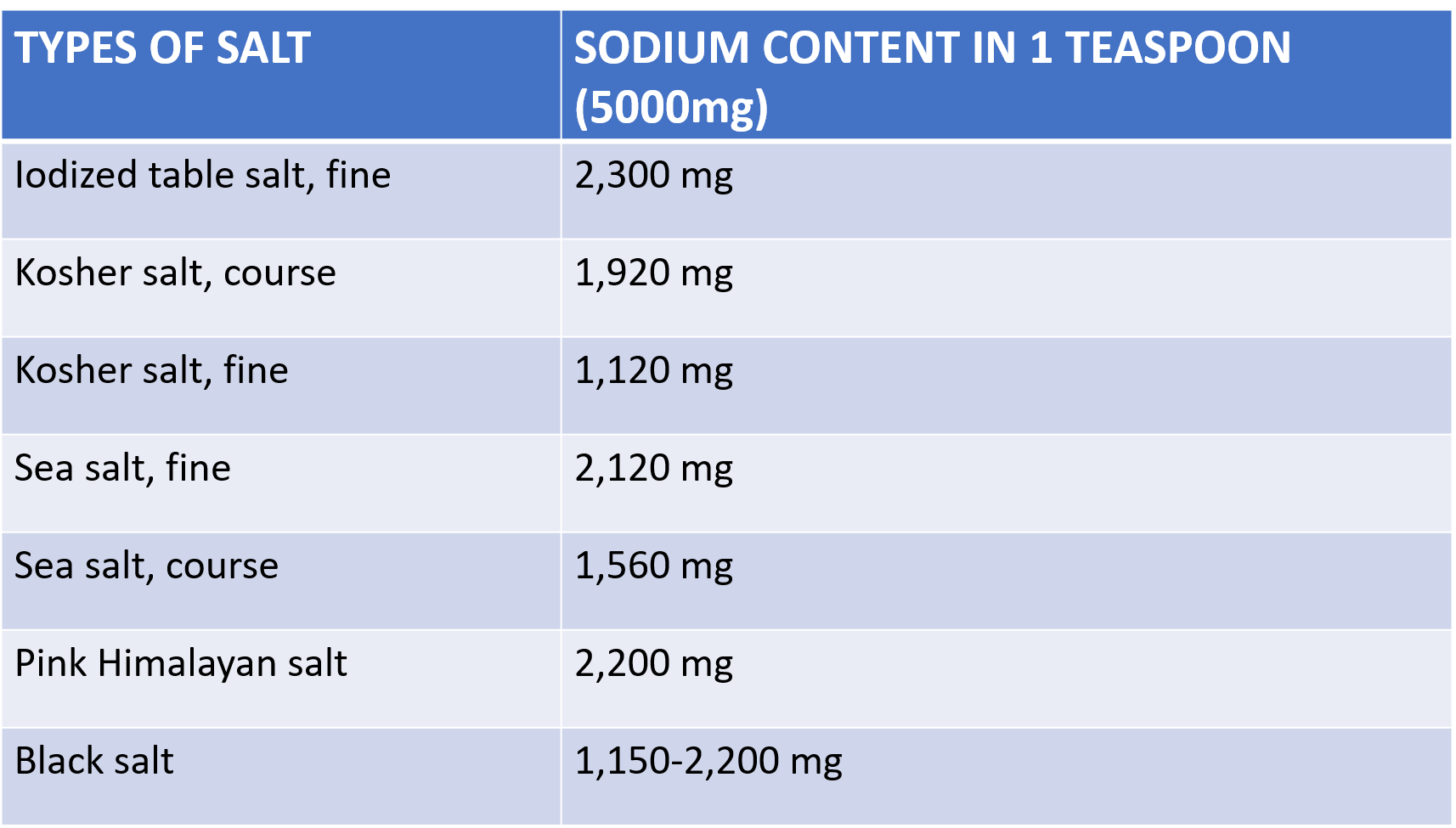- The word salt comes from the Latin word “sal,” meaning salt.
- Salt is a crystalline mineral also known as sodium chloride (NaCl). , is about 40% sodium and 60% chloride.
- These two elements are essential to life. We cannot live without them because they contribute to numerous critical biological processes
- Salt is a chemical compound often called as “common salt” or “table salt”. It has been used in food preparations from thousands of years not only provides flavour but to help preserve food items as bacteria can’t thrive in the presence of a high amount of salt
Why we need salt?
- Regulating the amount of water that’s in and around your cells and balancing electrolytes.
- Carrying nutrients into and out of your cells
- Helping the brain function
- Helping the nerves send out electrical impulses (conduct nerve impulses)
- Aiding digestion and metabolism
- Supporting adrenal function
- Maintaining and regulating blood pressure
- Contract and relax muscles.
5 Types of Salt and how they affect Health
There is a large variety of salts on the market ranging in color, texture, taste, and nutritional value. Here, we are going to focus on five of the most commonly used and talked about salts: Refined table salt, Sea salt, Kosher salt, Pink Himalayan salt, and Celtic sea salt.

1. Refined salt:
- Refined salt, also referred to as table salt or cooking salt, is originally produced from either salt mines or evaporated ocean water. When a food has been refined (processed) it has been altered from its original state.
- So, as in the case of the refined salt, what started out as a beneficial mineral, is quickly transformed into an altered state. It’s been chemically cleaned and stripped of natural healing minerals which in the end reduces its initial natural nutrients.
- It’s dried in high heat above 1,200 degrees Fahrenheit. That excessive heat alters the natural chemical structure of the salt. To make matters worse, during the drying process, manufacturers add anti-caking agents so the end product will pour and flow freely. These anti-caking agents are dangerous chemicals like ferrocyanide and aluminosilicate.
- Along with anti-caking agents, iodine is also added to refined salt.
- Overall, table salt is not pure. Rather, it’s 97.5 percent sodium chloride and 2.5 percent chemicals.
- Consuming too much of this type of salt can cause excess fluid in your body tissues and lead to various health issues. Despite table salt having little in common with natural salt, this is the type most people use to flavour their homecooked food and most food manufacturing companies dump into their packaged products. Even sweet foods that don’t taste salty are loaded with refined salt and sodium. Manufacturers use it to preserve foods (extending their shelf life) and enhance flavour.
2. Sea Salt
- If you’ve ever had sea salt then you know there is a huge texture difference when compared to traditional table salt. Sea salt is often less ground, meaning the salt flakes are larger. This type of salt is made by evaporating seawater and usually contains some amount of trace minerals like potassium, iron, and zinc. While sea salt is definitely a better choice than refined table salt, it’s still not the best. That’s because of the pollutants in our oceans. Our oceans have become dumping grounds for toxic poisons like mercury and much more. Just like pollution has affected our fish supply, sea salt can also contain trace amounts of heavy metals, like lead and mercury.
3. Kosher Salt
Kosher salt was originally used for Jewish religious purposes. It was used to remove blood from the surface of meat, making the meat Kosher. This type of salt has a flaky, coarse structure that easily draws out the blood. While Kosher salt is similar to table salt because they both originate from either underground mine deposits or evaporated seawater, the two salts are not the same. Aside from the larger grains and different texture, Kosher salt is not iodized and usually doesn’t contain anti-caking agents. If manufacturers do add anti-caking agents to Kosher salt, though, it is in much smaller amounts than compared to table salt.

4. Pink Himalayan Salt
- Himalayan pink salt is a naturally pink colored variety of salt derives from the mountains of the Himalayas. It’s called the purest salt on earth because it’s said to be uncontaminated with modern-day toxins or pollutants. Another benefit of Himalayan salt is it contains lower amounts of sodium than table salt. Plus, it also contains small amounts of minerals such as iron, potassium, magnesium, and calcium. In fact, 16 percent of Himalayan salt is naturally occurring trace minerals. It’s only 84 percent sodium chloride (compare that to table salt, which is 97.5 percent sodium chloride).
- Pink Himalayan salt has superior mineral content compared to table or sea salt.
- Doctors say regular consumption of pink Himalayan salt can help balance electrolytes, balance the body’s pH level, support nutrient absorption, and eliminate toxins. Aside from the health benefits, this type of salt is a bit coarser and offers a strong flavour. A little goes a long way in terms of pleasing your taste buds!
- Pink Himalayan salt has many essential minerals and elements. However, many of these minerals are present in very small amounts and might not contribute to any health benefits
- The iodine content in Himalayan salt is <0.1 g.


5. Celtic Salt
- Celtic sea salt originates from Brittany, France near the Celtic Sea. It has a greyish hue and retains its moisture. After collecting from the seashore, it is dried in wind and sunlight. So no matter how you store this type of salt, it will always be moist to the touch.
- Despite the texture difference, many health experts compare Celtic salt to pink Himalayan salt because of its nutritional content. Celtic salt also contains a variety of trace minerals and is lower in sodium than regular table salt. In fact, studies show Celtic salt has the least amount of sodium than any of the other salts mentioned on this list. It also has the highest amount of certain key minerals, such as calcium and magnesium.
- Sourced from Britany, France, this grey-colored salt contains 34 minerals in traces that add to its nutritional profile. Celtic salt is better than regular table salt
- With similar nutrients, it may not come as a surprise that Celtic salt is slated to offer the same health benefits as Himalayan salt.
Where Does Celtic Sea Salt Come From?
- Salt is mined from the seashore of Brittany that is located in France. The evaporation of water forms the crystals of Celtic salt at the seashore.

Is Himalayan Salt Better Than Celtic Salt?
- The number of trace elements in both salts is also differentiated by a significant number. Himalayan rock saltcontains 84 trace elements whereas, Celtic salt contains 34 trace elements. Himalayan salt contains 84% sodium chloride whereas, and Celtic salt contains 33% sodium and 50.9% chloride.
Which Type of Salt Is Good for Health?
- Your best is to stick with pink Himalayan salt and Celtic sea salt. They are both pure, contain the lowest amount of sodium, and have the highest amount of trace minerals.
- Himalayan salt is said to be pure and unrefined salt with a spectrum of more than 80 trace minerals that contributes to its benefits. This makes it better than Celtic salt which contains less mineral content than pink salt.

What Is Rock Salt?
- Rock salt (also known as halite) is primarily sodium chloride. Rock salt is mined from salt rocks that have formed naturally, usually near the ocean, or other salty bodies of water. Although, some rock salt is mined from locations not near salt water. Essentially, rock salt is salt originally from the ocean that has solidified into a rock.
- Rock salt is often used for icy roads, to make ice cream and for water softeners.
- Kala Namak is a form of rock salt that is commonly referred to as black salt.
Sodium and Health
- Sodium has overstimulation effect on the immune system, suggesting a link with autoimmune diseases such as multiple sclerosis, allergies, and other conditions.
- Researchers have found that children who consume salty foods are to have a sugary drink with it. The combination could increase the risk of obesity.
- In most people, the kidneys have trouble keeping up with excess sodium in the blood.
According to American Heart Association;
When there is too much sodium in the blood, it “pulls more water into the bloodstream.” As the volume of blood increases. The heart has to work harder to pump it around the body. In time, this can stretch the walls of the blood vessels, making them more susceptible to damage.
Over time, the extra work and pressure can stiffen the blood vessels, leading to high blood pressure, heart attack, stroke etc. It can also lead to heart failure. There is some evidence that too much salt can damage the heart, aorta, and kidneys without increasing blood pressure. It may be bad for bones, too, It can also cause calcium losses, some of which may be pulled from bone.
Too little salt
- Low sodium levels can result if there is too much fluid in the body, for example, because of fluid retention. Diuretics are given in this case, to reduce fluid retention.
Other causes of low sodium in the body include:
- Addison disease
- A blockage in the small intestine
- Diarrhea and vomiting
- An underactive thyroid
- Heart failure
- Drinking too much water
- Burns
- If sodium levels fall in the blood, this affects brain activity. The person may feel sluggish and lethargic. They may experience muscle twitches, followed by seizures, a loss of consciousness, coma, and death. If sodium levels fall quickly, this may happen very fast.
- In older people, symptoms can be severe.
- One study found that when rats were deprived of sodium, they kept away from activities that they normally enjoyed. The researchers suggested, therefore, that low sodium could act as an antidepressant.
Signs of Deficiency and Toxicity
Deficiency
- A deficiency of sodium in the U.S. is rare because it is so commonly added to a wide variety of foods and occurs naturally in some foods.
- Hyponatremiais the term used to describe abnormally low amounts of sodium in the blood.
- This occurs mainly in older adults, particularly those living in long-term care facilities or hospitals who take medications or have health conditions that deplete the body of sodium, leading to hyponatremia.
- Excess vomiting, diarrhea, and sweating can also cause hyponatremia if salt is lost in these fluids that are expelled from the body.
- Sometimes too much fluid abnormally collecting in the body can lead to hyponatremia, which might stem from diseases such as heart failure or liver cirrhosis.
- In rare cases, simply drinking too much fluid can lead to hyponatremia if the kidneys can’t excrete the excess water.
- Symptoms of hyponatremia can include: nausea, vomiting, headaches, altered mental state/confusion, lethargy, seizures, coma.
Toxicity
- Too much sodium in the blood is called hypernatremia.
- When sodium accumulates in the blood, water is transferred out of cells and into the blood to dilute it. This fluid shift and a build-up of fluid in the brain can cause seizures, coma, or even death. Extra fluid collecting in the lungs can cause difficulty breathing. Other symptoms of hypernatremia can include: nausea, vomiting, weakness, loss of appetite, intense thirst, confusion, kidney damage.
How much salt?
- The average American consume at least 1.5 teaspoons of salt per day, currently eats more than 3,400 milligrams (mg) or 3.4 grams (g) of sodium every day.
- The AHA and the World Health Organization recommend not exceeding a daily sodium intake of 1,500 mg, or 1.5 g a day, or just over half a teaspoon of table salt.
- People with high blood pressure, diabetes or cardiovascular diseases should be especially vigilant in keeping their intake below the 1,500 mg threshold.
What does 1,500 mg of sodium look like?
- One egg: up to 140 mg
- 230 g of fresh milk: around 50 mg
- 200 g of plain yogurt: 40 mg
- 200 g of natural, low-fat yogurt: 76 mg
- 50 g of raw celery: 140 mg
- 60 g cooked spinach: 120 mg
- Other vegetables are low in sodium, but canned vegetables have added salt and a far highersodium content.

